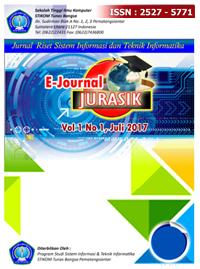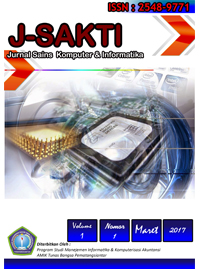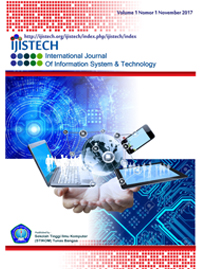Penerapan Data Mining Dalam Mengelompokkan Data Impor Tembaga Menurut Negara Asal Menggunakan Algoritma K-Means
Abstract
Full Text:
PDFReferences
A. J. Nathan and A. Scobell, “How China sees America,” Foreign Aff., vol. 91, no. 5, pp. 1689–1699, 2012.
S. Al Syahdan and A. Sindar, “Data Mining Penjualan Produk Dengan Metode Apriori Pada Indomaret Galang Kota,” J. Nas. Komputasi dan Teknol. Inf., vol. 1, no. 2, 2018.
Y. Darmi and A. Setiawan, “Penerapan Metode Clustering K-Means Dalam,” Y. Darmi, A. Setiawan, vol. 12, no. 2, pp. 148–157, 2016.
M. Robani and A. Widodo, “Algoritma K-Means Clustering Untuk Pengelompokan Ayat Al Quran Pada Terjemahan Bahasa Indonesia,” J. Sist. Inf. Bisnis, vol. 6, no. 2, p. 164, 2016.
R. A. Asroni, “Penerapan Metode K-Means Untuk Clustering Mahasiswa Berdasarkan Nilai Akademik Dengan Weka Interface Studi Kasus Pada Jurusan Teknik Informatika UMM Magelang,” Ilm. Semesta Tek., vol. 18, no. 1, pp. 76–82, 2015.
D. Retno and S. Mayangsari, “PENGELOMPOKKAN JUMLAH DESA / KELURAHAN YANG MEMILIKI DENGAN MENGGUNAKAN METODE K-MEANS CLUSTER,” vol. 3, pp. 370–377, 2019.
F. Ramdhani and A. Hoyyi, “Pengelompokan Provinsi Di Indonesia Berdasarkan Karakteristik Kesejahteraan Rakyat Menggunakan Metode K-Means Cluster,” J. Gaussian, vol. 4, no. 4, pp. 875–884, 2015.
S. Kasus, U. Dehasen, S. Haryati, A. Sudarsono, and E. Suryana, “IMPLEMENTASI DATA MINING UNTUK MEMPREDIKSI MASA STUDI MAHASISWA MENGGUNAKAN ALGORITMA C4 . 5,” J. Media Infotama, vol. 11, no. 2, pp. 130–138, 2015.
DOI: http://dx.doi.org/10.30645/senaris.v2i0.191
Refbacks
- There are currently no refbacks.
 








